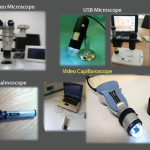Cilnidipine is approved to treat hypertension in some Asian countries, but not in the U.S., Canada, the European Union or the U.K. Cilnidipine causes vasodilation and improves function in the heart, kidneys and vasculature. Dihydropyridine calcium channel blockers, such as nifedipine or amlodipine, are used off-label to treat Raynaud’s phenomenon. The potential role of cilnidipine for SSc or Raynaud’s phenomenon appears promising.
Michele B. Kaufman, PharmD, BCGP, is a freelance medical writer based in New York City and a pharmacist at New York Presbyterian Lower Manhattan Hospital.
ad goes here:advert-1
ADVERTISEMENT
SCROLL TO CONTINUE
References
- AISA Pharma receives FDA orphan designation for AISA-021 for treatment of systemic sclerosis [news release]. Aisa Pharma Inc. 2024 Sep 9.
- Medical products for rare diseases and conditions. U.S. Food & Drug Administration. 2024 Oct 1.
- Mayo Clinic staff. Diseases & conditions: Scleroderma. Mayo Clinic. 2024 Jun 15.
- Adigun R, Goyal A, Hariz A. Systemic Sclerosis (Scleroderma) [updated 2024 Apr 5]. StatPearls [Internet]. Treasure Island, Fla.: StatPearls Publishing. 2025 Jan.

